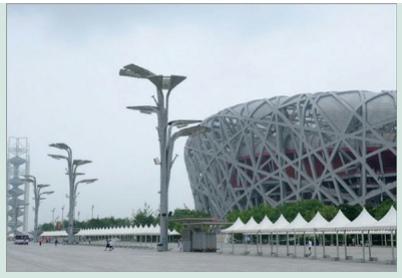Draw a Gantt chart visualizing the evolution of the project from initial design competition to completion. Discuss
Question:
Draw a Gantt chart visualizing the evolution of the project from initial design competition to completion.
Discuss the iteration between construction and design in the context of a dependency matrix. Do you think this iteration could have been anticipated? What were the major uncertainties faced by the developers?
Discuss the project management triangle and what changed in the triangle when the design was adjusted following the decision of eliminating the retractable roof and reducing the seating capacitY.
The Beijing National Stadium, which was home to the 2008 Beijing Olympics, is a masterpiece of design and construction. The stadium seats over 80,000 people (for the Olympic Summer Games, the seating capacity was even larger) and has a unique shape, consisting of an inner seating structure and an outer steel structure that is wrapped around. This design creates remarkable shapes and patterns, which give the stadium its nickname, the Bird’s Nest.
The design for the stadium was chosen after an extensive design competition on March 25, 2003. The competition was won by a joint venture of the design firm Herzog & de Meuron with architect Stefan Marbach and artist Ai Weiwei and the China Architecture Design and Research Group under the guidance of Li Xinggang.
In April 2003, grounds were inspected and a prebid meeting was held, generating the construction budget.
By September 2003, contracts were negotiated and a project company in charge of construction was established.
Ground was broken in December 2003. However, the project took a major hit in 2004. Following the collapse of a large roof structure at one of the Paris Charles De Gaulle Airport terminals, the Beijing organizing committee decided to evaluate all similar structures under construction for the Olympics. After long deliberation, they decided that the retractable roof that was part of the initial stadium design should be cancelled. Thus, in July 2004, the design of the stadium was adapted to a design eliminating the roof and also dropping about 9,000 seats.
Budget and design were reworked by November 2004. By December 2004, the project was back in construction mode. Despite the unpleasant interruption, the organizers could at least be comforted by the fact that the revised design was substantially cheaper to build.

In May 2008, the construction of the stadium was completed, allowing for the installation of the field as well as for a completion ceremony in June 2008.
Step by Step Answer:

Operations Management
ISBN: 9781260547610
2nd International Edition
Authors: Gerard Cachon, Christian Terwiesch





